
Keratin is an extremely important aspect of much of the planet’s animal life. This protein derives from special cells located just under an animal’s skin and is an essential component of the skin, hair and other protective barriers that determine the external structures of humans, other mammals, birds and reptiles. The properties of keratin determine its many differing appearances and uses.
Keratin Formation
Keratin forms in special cells, known as keratinocytes, located in the lower parts of an animal’s dermal layers. This fibrous protein forms in a process known as keratinization in which the keratinocytes of the skin’s lower layers make and store keratin within a cell’s cytoplasm. As the cells age, newer cells begin to push the keratinocytes outward. Most of the cells’ structures, including the nucleus, die during this process, leaving only a flattened layer of keratin.
Keratin Chemistry
Keratin refers to a family of proteins that create a variety of structures in animals, but all keratin molecules have similarities. The proteins have a fibrous structure in which two helix-shaped molecules coil around each other. Among the 18 amino acids that create the keratin molecule, a sulfurous amino acid called cysteine is the most common. In human hair, for example, cysteine composes about 14 percent of keratin. Keratin coils connect by both weak hydrogen bonds and by stronger ionic or sulfide bonds. The hydrogen bonds can break in the presence of water, accounting for hair’s often dramatic response to the moisture. Chemicals, such as those used in hair salon products, can alter even the stronger sulfide bonds between keratin molecules.
Keratin Structures
Most of the external structure of mammals, birds and reptiles derives from keratin structures. Keratin is present in hair, nails, tooth enamel and the outer layer of skin in humans. Other animals have keratin in fur, feathers, horns, nails, claws, reptile scales, hooves and whale baleens. Keratin creates these structures by slight variations in amino acids that can produce a thin and flexible layer of skin, a strong and diversified feather and a thick, rigid hoof.
Keratin Benefits
Keratin provides a protective layer around an animal that prohibits the passage of environmental contaminants, bacteria and viruses into the body. The proteins in keratin create an extremely strong and durable structure. Tooth enamel allows the exposed bone of teeth to avoid decay, and animal claws have sufficient strength to tear hard substances such as wood and even bone. Keratin’s durability makes it one of the last biological structures to decay, as evidenced by mummies retaining hair after even thousands of years. Keratin structures like nails and hair also retain evidence of bodily processes after long periods of time. As a result, forensic scientists can determine the presence of nutritional markers, drugs and poisons from a small sample of hair or nails.
Hair and Keratin
Hair styling practices depend a great deal on keratin’s properties. The malleability of hair strands derives from the intertwined keratin coils and the bonds between individual molecules. Basic styling takes advantages of keratin’s weak hydrogen bonds, breaking them with water to manipulate the hair. Hair products often contain keratin in their ingredients in order to coax unruly hair into greater behavior.
Related Articles
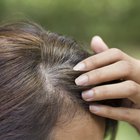
What is Hair Composed of?

What Are the Functions of Keratin?

Essential Enzymes for Hair Growth

Ingredients in Hairfinity Vitamins

Stages of Underarm Hair
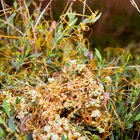
Traditional Uses of Cuscuta
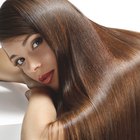
Keratin Hair Treatment Ingredients
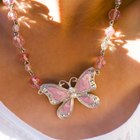
What Materials Are Used to Make Costume ...
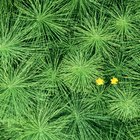
Horsetail vs. BioSil

Ingredients in Trader Joe's Shampoo

Elastin Supplements

The Role of Collagen & Melanin in Skin

What Foods Provide Calcium D-Glucarate?
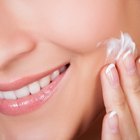
Ingredients in Restylane

Why Is Ventilation Needed in a Beauty ...
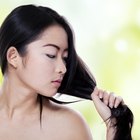
How Does Ecrinal Hair Care Make Hair ...

How to Test Hair Strength

What Is Palmitoyl Oligopeptide?
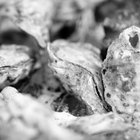
How Do Oysters Protect Themselves?

Benefits of GMO Foods
References
Resources
Writer Bio
Laurel Brown has several years experience as an educator and a writer. She won the 2008 Reingold Prize for writing in the history of science. Brown has a Ph.D. and Master of Arts in the history of science and Middle Eastern studies from Columbia University, as well as a Bachelor of Arts in astrophysics from Colgate University.
Photo Credits
hair image by DXfoto.com from Fotolia.com